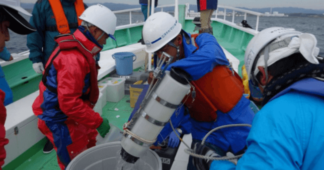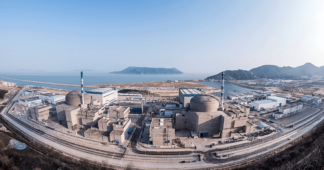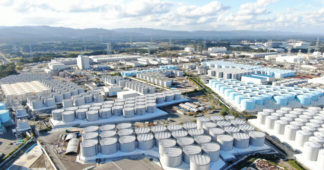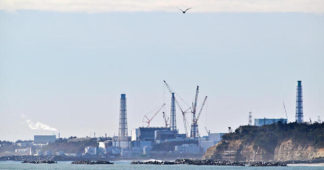by Fritz Schumann
Tokyo, Japan,
Since August 22, 2023, the operator of Japan’s stricken Fukushima Daiichi nuclear power plant has been discharging contaminated water into the Pacific Ocean. The government had authorized the operator Tokyo Electric Power Company Holding (TEPCO) to do this, despite protests from local residents and countries in the neighborhood. It was not only the island states, which essentially live from fishing, that felt politically duped. A number of neighboring countries, including the People’s Republic of China, responded with an import ban on Japanese seafood. In the last week of April, a delegation from the International Atomic Energy Agency (IAEA) visited Japan to inspect measures relating to the discharge of water containing tritium in Fukushima. After several days of inspection, Gustavo Caruso, Director of the IAEA’s Nuclear Safety Division and head of the delegation, explained that his agency would continue to monitor Japan’s water discharge independently, objectively and according to scientific criteria. The IAEA delegation also included experts from China and South Korea, as NHK, Japan’s public broadcaster, briefly reported.
The IAEA mission was overshadowed by reportable accidents that made it clear that the supposedly safe Japanese nuclear power plants – barring extreme earthquakes and tsunamis like the one that struck Fukushima in 2011 – continue to pose a considerable risk that extends beyond the immediate region. This may explain why the following news did not make it into the international media, especially as many countries continue to cling to this unsafe technology and build further NPPs.
At the Shiga nuclear power plant (Ishikawa Prefecture) on the Noto peninsula, which was shut down after Fukushima in 2011, it was discovered in mid-April that parts of the drive system used to lift nuclear fuel rods had come loose in power plant unit 1. According to the operator, Hokuriku Electric Power Company, this was the cause. According to the operator, Hokuriku Electric Power Company, this was probably the result of the earthquake on the Noto peninsula on New Year’s Day. However, it was not a “serious problem” and the incident would still be investigated, even if it had “no impact on safety”. It is worth remembering that 25 years ago, the Shiga nuclear power plant was out of control for several minutes because control rods were accidentally moved out instead of in. Eight years later, the company admitted that it had falsified reports at the time.
The second mishap occurred on April 15 at around 10 p.m.: in Unit 7 of the Kashiwazaki Kariwa nuclear power plant (Niigata Prefecture), which is due to be restarted, there were problems with a control rod during the computer-controlled loading of the reactor. After twelve (out of 872 chambers) had been filled with fuel rods, the process was automatically shut down. According to the operator TEPCO, it was discovered that the electronic monitoring system was “not working properly”, which is why the loading process was resumed after around three hours. It therefore comes as no surprise when TEPCO casually announces that there was a power outage at the damaged Fukushima nuclear power plant on April 24. The system for cooling the reactors is still in operation and “no significant changes” have been detected in the systems for monitoring radioactivity. As a precaution, however, the discharge of contaminated wastewater into the Pacific had been suspended. “At 10:43 a.m., power source A failed,” Tepco announced last Wednesday, without giving details. Allegedly, only one worker was injured, but not contaminated.
We remind our readers that publication of articles on our site does not mean that we agree with what is written. Our policy is to publish anything which we consider of interest, so as to assist our readers in forming their opinions. Sometimes we even publish articles with which we totally disagree, since we believe it is important for our readers to be informed on as wide a spectrum of views as possible.











